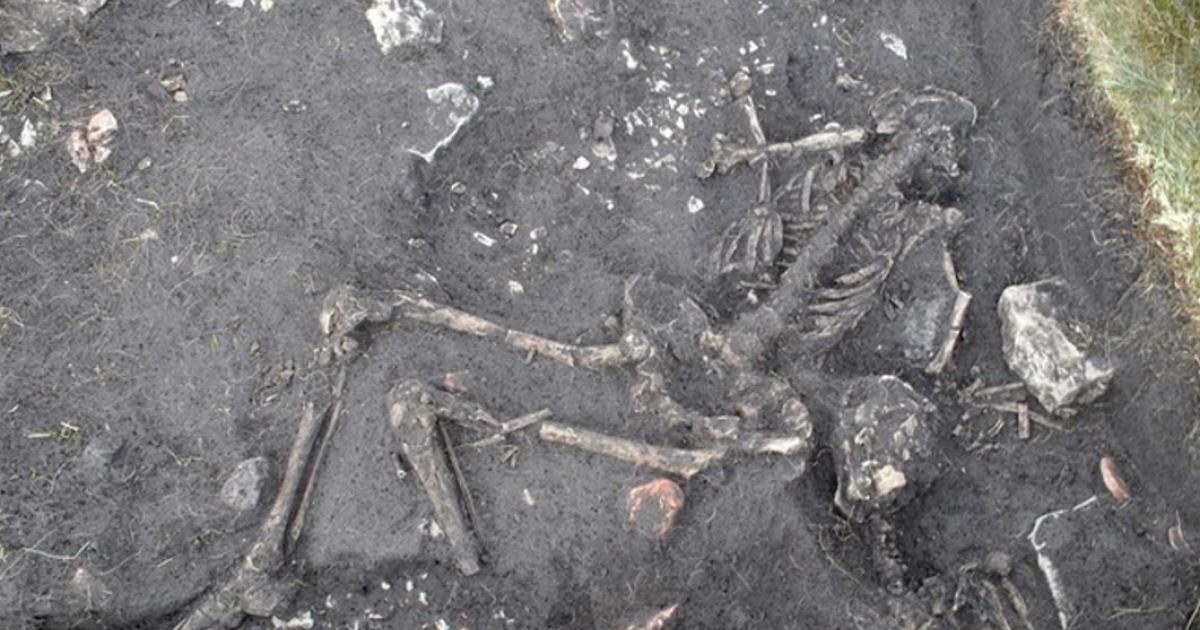
The Crime of Sandby Borg: Site of a 1,600-Year-Old Tragedy in Sweden
Something terrible happened on Sweden’s Öland Island about 1,600 years ago. It was so bad that after an attack on a small fort there the site was taboo for years.
Possibly hundreds of people were killed in an attack on the fort, called Sandby borg, their unburied bodies left to rot, some with sheep and goats’ teeth stuffed in their mouths. The people of the village had some wealth in the form of gold and silver jewelry and gold coins. Archaeologists think that the site wasn’t looted until 2010, when people with metal detectors began digging around.
In 2010, archaeologists also began excavations and noted that modern treasure hunters had dug holes near the fort. They think they may have been looking for gold coins.
“Professional metal detectorists were mobilized to search for anything the looters had missed,” says a detailed article about the massacre on Archaeology.org. “They uncovered five different jewelry stashes from houses at the center of the fort. The caches include silver brooches and bells, gold rings, and amber and glass beads. There were even cowrie shell fragments, pierced to be strung on a necklace.”

One of the brooches. (Pierre Rosberg/Kalmar läns museum)
There were 53 homes inside the oval stone and earth enclosure, now a remnant. Farms were nearby so people could quickly retreat behind the walls if there was an attack. There are another dozen similar borgs on Öland, constructed during Europe’s tempestuous Migration Period that began in the 4th century AD.
Archaeologists think the walls of the fort once reached 15 feet (4.57 meters) in height. It wasn’t long after the fort’s construction, Archaeology.org states, that the slaughter took place.

Excavations at the Sandby borg site. (Kalmar läns Museum)
Despite its great defenses, the villagers’ deaths were violent and quick, though apparently they had time to hide their treasure. Archaeologist Helena Victor of Kalmar County Museum, who is heading up the dig, told Ars Technica “The people of this fort were being shunned, consigned to a humiliation worse than death.” Over the years, people seemed to have left the site alone, so the bodies were covered in just a few inches of earth, in their homes and in fire pits.
- Child skeleton sheds new light on 1,500-year-old crime mystery in Sweden
- Archaeologists unearth 1,500-year-old crime scene in Sweden
- Top ten grisly discoveries in archaeology
The small town appears to have been a prosperous place where people had lived comfortably in small huts and reared livestock for meat.
But that came to end in a grisly way. One teenaged man’s skull was split open, probably by an ax. The ceiling was so low archaeologist think he was kneeling. Nearby was another skeleton. The team of archaeologists found another man who apparently died or was thrown on top of a fire, and the leg bone of a child nearby.
“It could have been a grandfather and his grandchild,” Victor told Archaeology.org. “It’s a very clear sign someone killed everyone in the fort. Normally, raiders take the children with them.”
The islanders profited from trade with others in Europe. Archaeologists have found hundreds of Roman coins, vessels, bronze statues and glass beads from the 1st to 4th centuries. The island is large, and has a long coastline where raiders could have made landfall, though why raiders would kill villagers and not search for booty seems a mystery.
The caches of treasure were placed with great deliberation, each buried just to the left of the door inside the houses as if by pre-arrangement. Victor tells Archaeology.org that she theorizes they expected foul play, telling each other, “If something happens to me, here’s where you’ll find it.”

Some of the artifacts that have been unearthed at Sandby borg. (Daniel Lindskog)
She said they found five separate caches in 2010, a sign that “something terrible must have happened. … Right away we realized they all had died.”
They returned in 2011 and began discovering more bodies.
In 2014, another gruesome discovery was made during an excavation carried out by the Department of Museum Archaeology at Kalmar County Museum, in cooperation with students from Linnaeus University. Archaeologists unearthed the skeletal remains of an adult male, aged 50 – 60 years, along with a small child, aged 2 to 5 years, both of whom were lying face down in a fireplace in the center of a building. It was the first child to be identified among the victims of the massacre at Sandby Borg. Until then, it was believed that only adults had been in the ringfort when the event took place.

A Roman coin found at the site of Sandby Borg, whose inhabitants probably included a number of unemployed Roman soldiers. (Max Jahrehorn Oxides)
In 2017, researchers trying to piece together the horror story of the massacre, unearthed a gold Roman coin and two gold rings, confiming the hypothesis that inhabitants of the island were in contact with the Roman Empire. But the finding added a new element of mystery to the site. The size of the rings suggests they were made to fit a woman, yet no female skeletons have been successfully identified at the site to date.
Featured image: In house 40 in the Sandby borg ringfort, the skeletons of two young men were found right inside of the door. Further into the house were more human remains. Source: Kalmar County Museum
By Mark Miller
















Comments
History is lost every day in the secret war between amateur looters and looters with government or academic credentials. It would seem Britain has a better system.